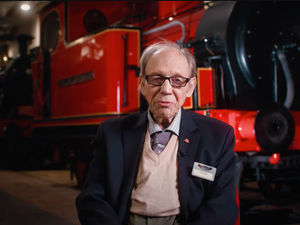See behind the scenes at RAF Cosford conservation centre where planes are restored - with pictures
While many thousands of people take in the awe-inspiring displays at the RAF Cosford Museum each year, not many of them will know about the conservation work going on behind the scenes.

Hidden away in a hangar on the site is the Michael Beetham Conservation Centre, where skilled engineers restore historic and rare aircraft from across the UK.
They travel all over the country using their skills to maintain not just aircraft, but boats, missiles, military vehicles and even tanks. And visitors to the museum next month will have a rare chance to see some of the work taking place in the centre.
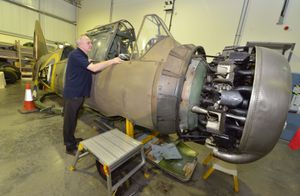
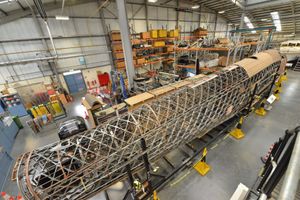
The site not only cares for exhibits for Cosford, but also for the RAF Museum in London and will help will large, 3D objects at sites across the UK. It is also busy preparing for the centenary of the Royal Air Force on April 1, 2018, and is working on new exhibits for two hangars at the site in Hendon.
It has been operating for 15 years and currently has about eight full time technicians, as well as taking on apprentices, looking to move into engineering while studying at City of Wolverhampton College.
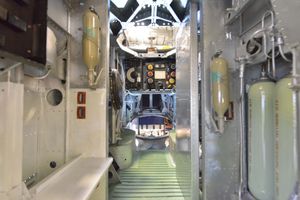
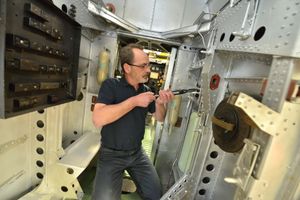
Darren Priday, manager of the centre, says he does not know how many objects the centre has, but says it could easily be in the thousands. Among the projects currently being worked on are a Handley Page Hampden, a Vickers Wellington, a Westland Lysander and a Red Arrows Gnat.
The Hampden has been a labour of love for aircraft technician Dave Carr, who has rebuilt the forward fuselage from scratch. He has also now completed the rear fuselage, with the work taking three years so far.
The bomber was recovered from a crash site in northern Russia in 1991 and acquired by the RAF Museum the following year. Once complete, the Hampden at Cosford will be one of only two examples and one nose section in existence from a total of 1,430 built.
In order to keep as much of the original plane as possible, Mr Priday said it was easier to start again with a model.
What the conservation try to do, is keep as much of the original aircraft intact as possible, using its original pieces as much as possible and restoring it.
But when new parts are needed, they are either taken from its bank of stores of replacement parts, or when that is not available, technicians will build them again by hand, using the part as a basis.
It is interesting work for the young apprentices, learning historic techniques, with staff at the conservation centre needed to be experts in a range of work; using wood, metal and even linen in the case of the Wellington, which is being entirely recovered. It has undergone work to treat small amounts of corrosion to its framework, wings and fuselage since its arrival at Cosford in June 2010.
Now both wings have been painted in a protective layer and one has already been re-covered in Irish linen and painted in its Bomber Command Night colour scheme. Work is now under way to repeat the process on the aircraft’s second wing and eventually the fuselage.
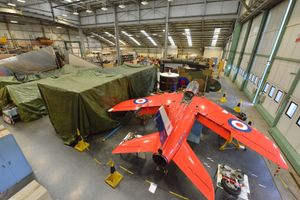
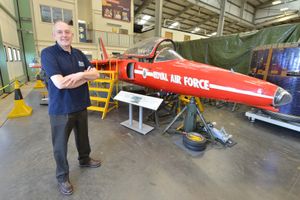
Apprentices were seen at the centre taking up wood from the aircraft and refinishing it before replacing it.
Ashley Guise, 18, is a second year college student who has been getting his work experience for just over a year at Cosford.
He said: “It has been really interesting, I have been really enjoying it.
“We have got heritage skills that many young people don’t have, you have to be really careful because some of the aircraft are so old. It can be very delicate.”
He said: “I don’t really know how small large starts, so if someone asked us to look at a watch it could be something we would do.”
And their skills were certainly put to the test when engineers worked on possibly one of their most complicated projects, the Dornier Do 17. The remains of the last Dornier Do 17 bomber lie sheltered from the elements in the centre as part of a project to conserve them for future generations.
The Germans built 1,500 of the bombers. The one now sitting in the Conservation Centre at RAF Museum Cosford was raised from the bottom of the Strait of Dover in the English Channel more than three years ago. It is the last remaining example
The Dornier and its many small components were sprayed with a citric acid solution for months in order to clear them of debris from their time under the water.
It is now drying out, before the conservation centre and project adviser, Professor Mary Ryan from the Imperial College London work out the best way for it to go on display.
Mr Priday said: “That was certainly one of the most complicated because it was an unknown.”
And as well as the staff at the centre, there are volunteers also helping out restoring planes. Day to day they help with the upkeep of the displays at the RAF Cosford Museum, but recently they have been working on the Westland Lysander III, the only surviving Special Duties variant of this aircraft.
Its engine has been totally cleaned, and looks almost as it would have during its service, though it may also need work to repair its linen in future.
The Conservation Centre is open between 10.15am and 1pm from November 13 to 18, where all of these aircraft, and other pieces will be on display. Open between 10.15am and 1pm each day and admission is £5.00 per person, children under 16 are free and must be accompanied by an adult.The museum’s other hangars will be open from 10am until 5pm and entry to the museum is free of charge.
For further information, visit the Museum’s website www.rafmuseum.org/cosford or call 01902 376200.


